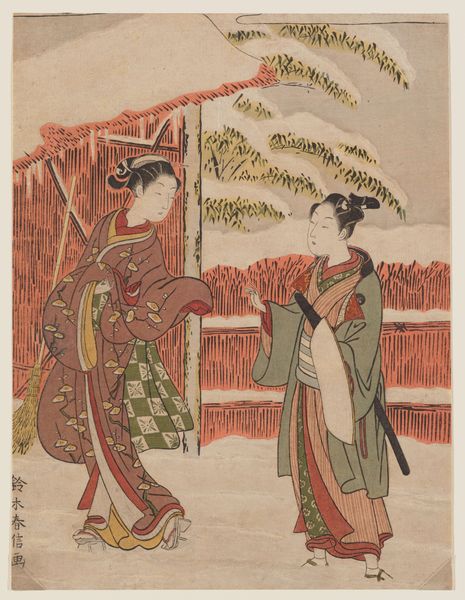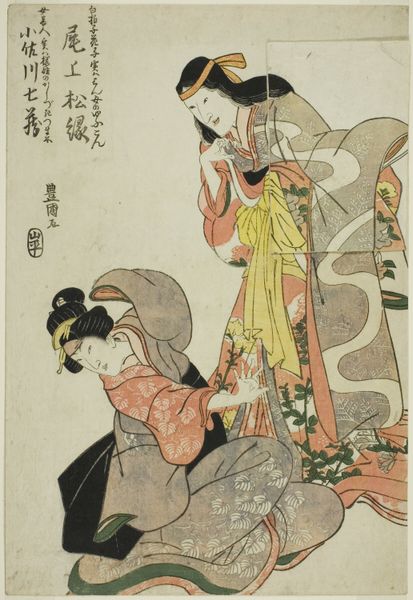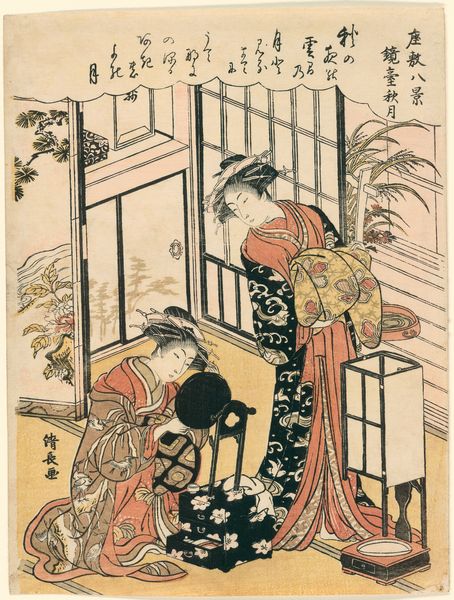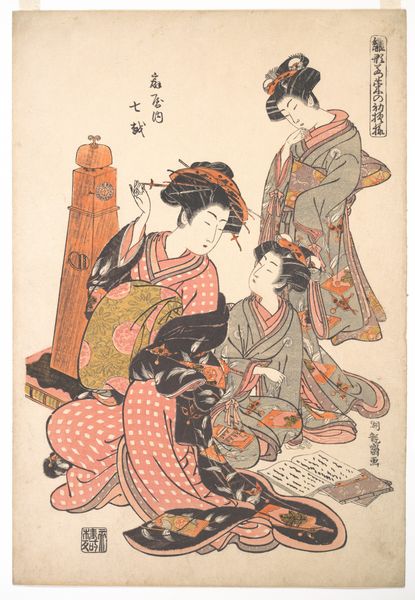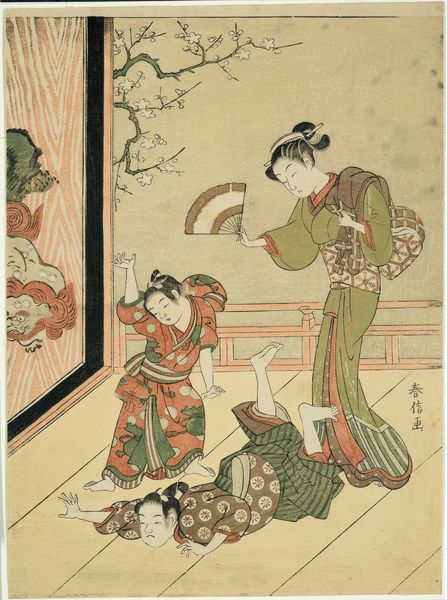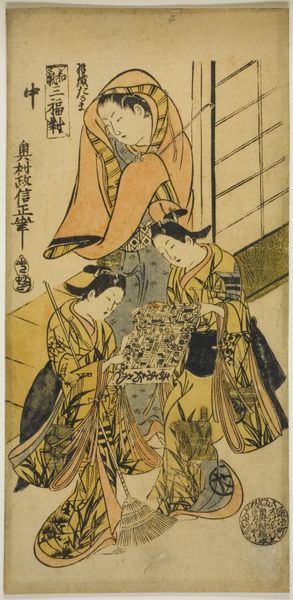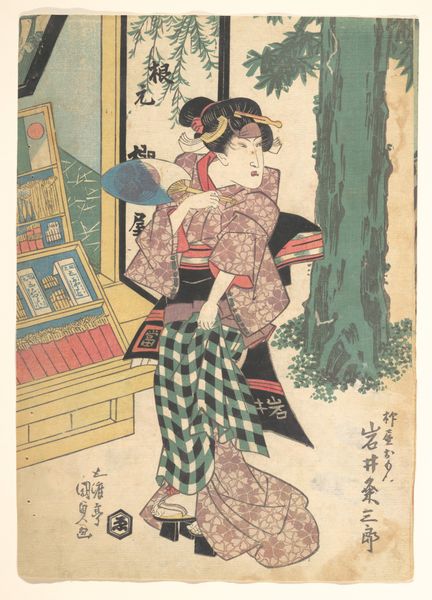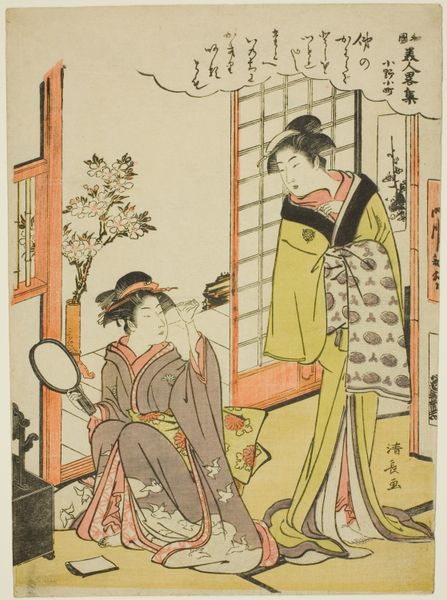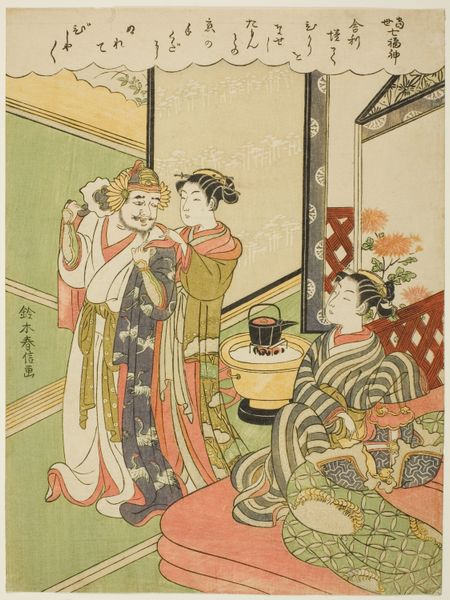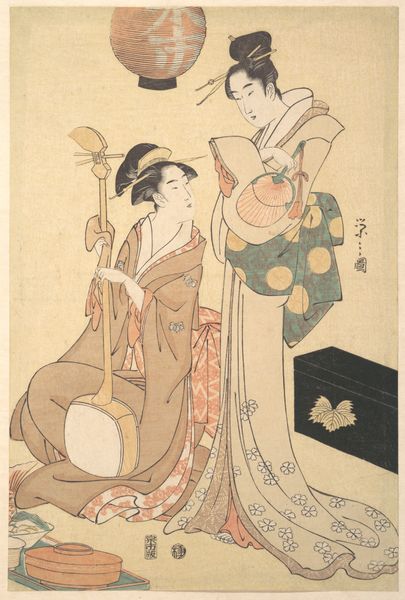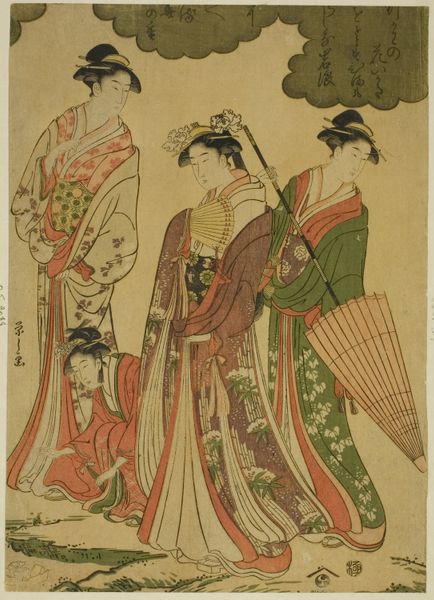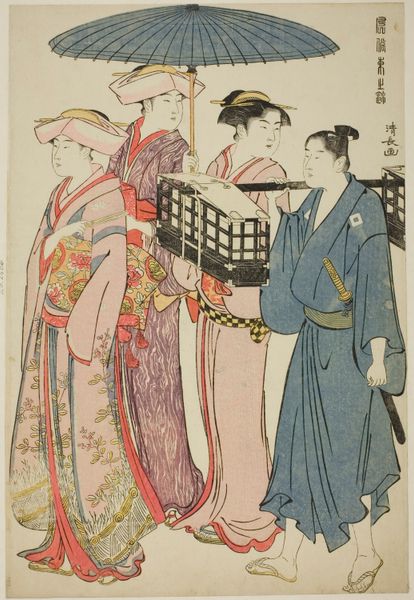
The Actor Nakamura Riko with a courtesan, from an untitled series of aiban prints depicting Actors in private life c. 1781 - 1782
0:00
0:00
#
portrait
# print
#
asian-art
#
ukiyo-e
Dimensions: 32.8 × 23.3 cm
Copyright: Public Domain
Editor: This is Torii Kiyonaga's print from around 1781 or '82, titled "The Actor Nakamura Riko with a courtesan." It’s an Aiban print from a series about actors in private life, held at the Art Institute of Chicago. I’m struck by the textures of the kimonos; you can almost feel the silk. What stands out to you? Curator: It's fascinating to consider the materiality of this print. Woodblock printing was a highly collaborative and specialized process, dividing labor between the artist, block carver, printer, and publisher, all serving commercial demands. The distinct lines and flat color fields resulted from this method of production. The materials employed—the woodblocks, the pigments— dictated the aesthetic to a great extent. Consider how these choices elevate what could have been seen as common popular culture into valuable and visually striking artwork. The very paper is an object of consideration! Editor: That's a good point, that the physical materials influenced the style we see. But what about the artist's choice of subject: an actor with a courtesan? Is there a significance there? Curator: Absolutely! It reveals an intricate understanding of social context. Ukiyo-e prints catered to a burgeoning merchant class who enjoyed Kabuki theater and desired images of its stars. The depiction of actors and courtesans was highly commercialized; these were commodities themselves. Kiyonaga is playing with class, with desire, and with production on multiple levels. The artist isn't just making an image; he's participating in an elaborate social exchange. The images themselves fed back into creating those classes. Editor: So, it’s not just art imitating life but art as an active participant in life? Curator: Precisely. Looking at the lines, the colours, we have to consider it as commodity that reflects, refracts, and participates in a system of consumption, in the making and re-making of class and performance. Editor: That shifts my perspective quite a bit. I was so focused on the image itself, the figures, that I almost overlooked the production as a key ingredient to its meaning. Curator: Exactly! It urges us to think about how the mode of production can be as meaningful as, or even determine, what’s represented.
Comments
No comments
Be the first to comment and join the conversation on the ultimate creative platform.
